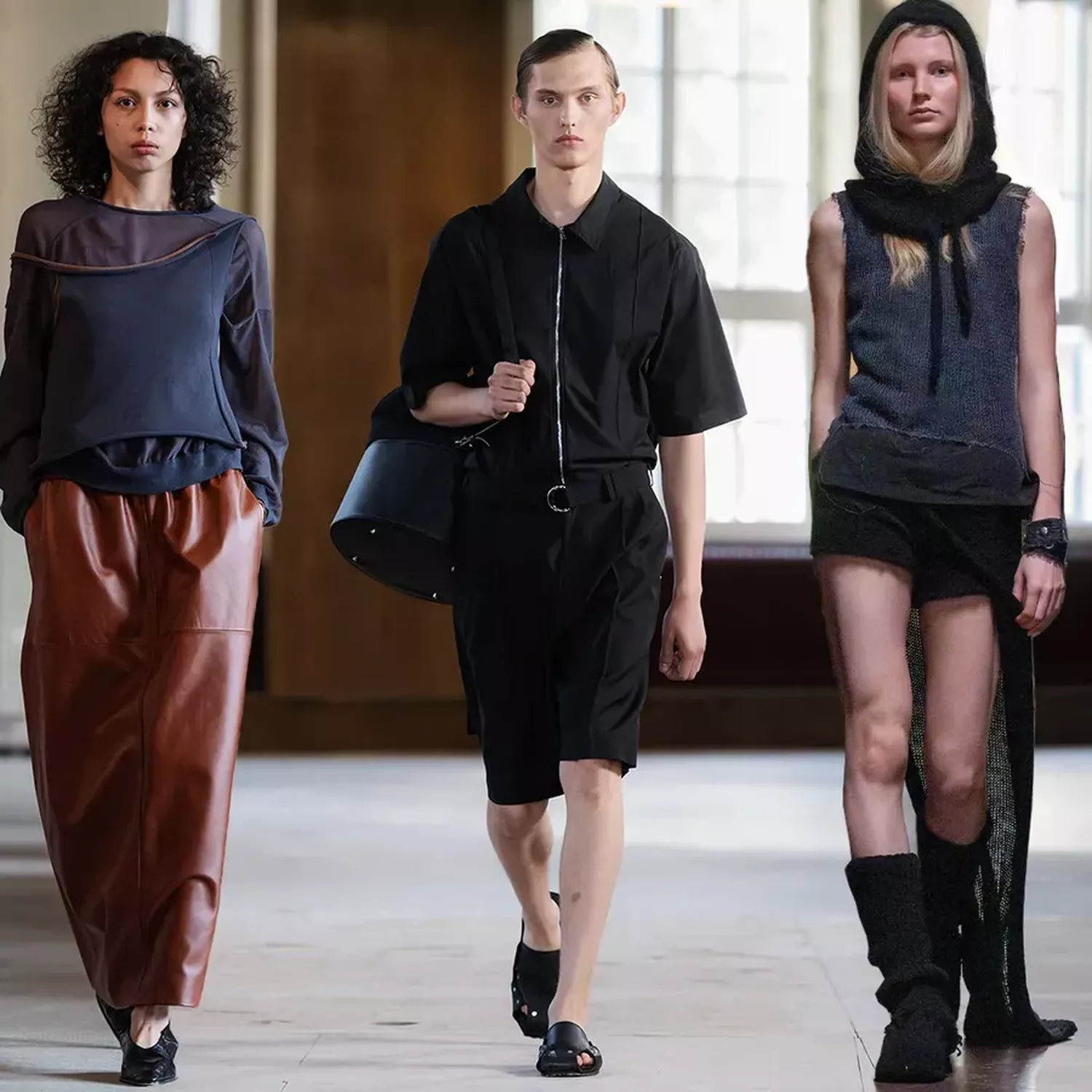After a stunning showcase of emerging design at Stockholm Fashion Week, we whittle down all the talent to the six new Swedish brands you need to have on your radar
When the sun came at Stockholm Fashion Week – now known as STHLMFW – it felt like a metaphor, as the event had been on hold for so long. For the first time ever, the Swedish government helped support the city’s shows. “Our creative companies are not only powerful export engines, they’re also important bearers and ambassadors of Swedish ideas, knowledge, and culture,” said Benjamin Dousa, Minister for International Development Cooperation and Foreign Trade.
STHLMFW was organized by the ASFB (Association of Swedish Fashion Brands), and the idea was to turn a spotlight on newer businesses, the majority of which were founded between 2020 and 2023. Most of the labels on the roster had never put on a show before (or in the case of Deadwood, never put one on in their hometown). These debuts drew eager crowds of young people for whom a fashion week in the capital was also a new occasion – and, boy, did they dress for it. Acielle Tanbetova was on hand to document the street style, and in most cases it wasn’t at all minimal. On the runways, there was a balance between clean-lined looks and avant-garde ones, mirroring what’s happening more broadly in the world of style.
Newness is almost a fetish in fashion, and that has fueled a lot of interest in emerging talents versus new businesses. The buzziest shows of the week – Studio Constance and Past Tense – were created by seasoned designers who have recently gone out on their own and their experience showed. The success of this STHLMFW was in the balance between new ventures by designers who have worked in the industry and the “ones-to-watch” who are just starting their careers. Meet some of Stockholm’s budding stars below.

Photo: Mathias Nordgren / Courtesy of Studio Bon and STHLMFW
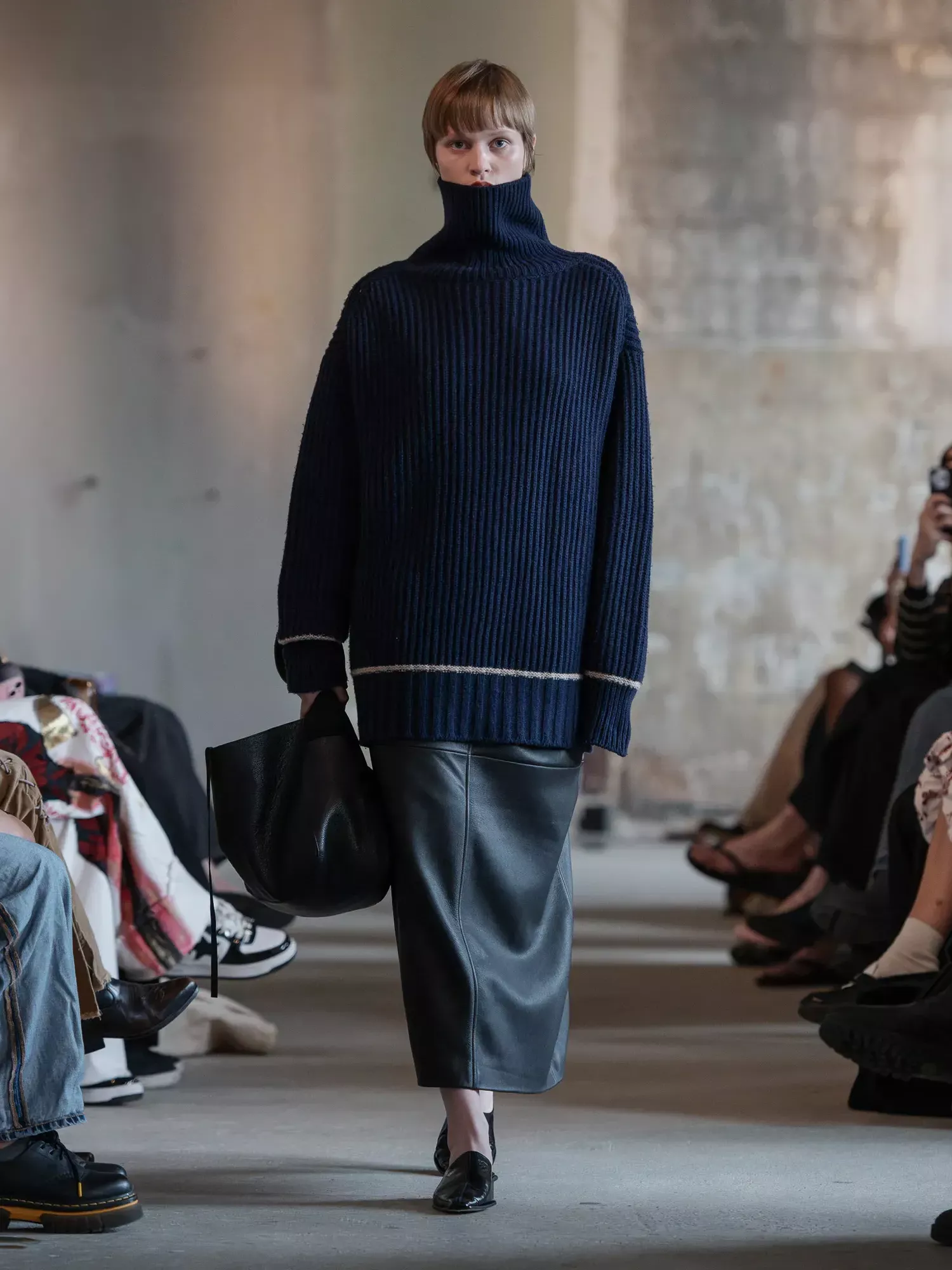
Photo: Mathias Nordgren / Courtesy of Studio Bon and STHLMFW
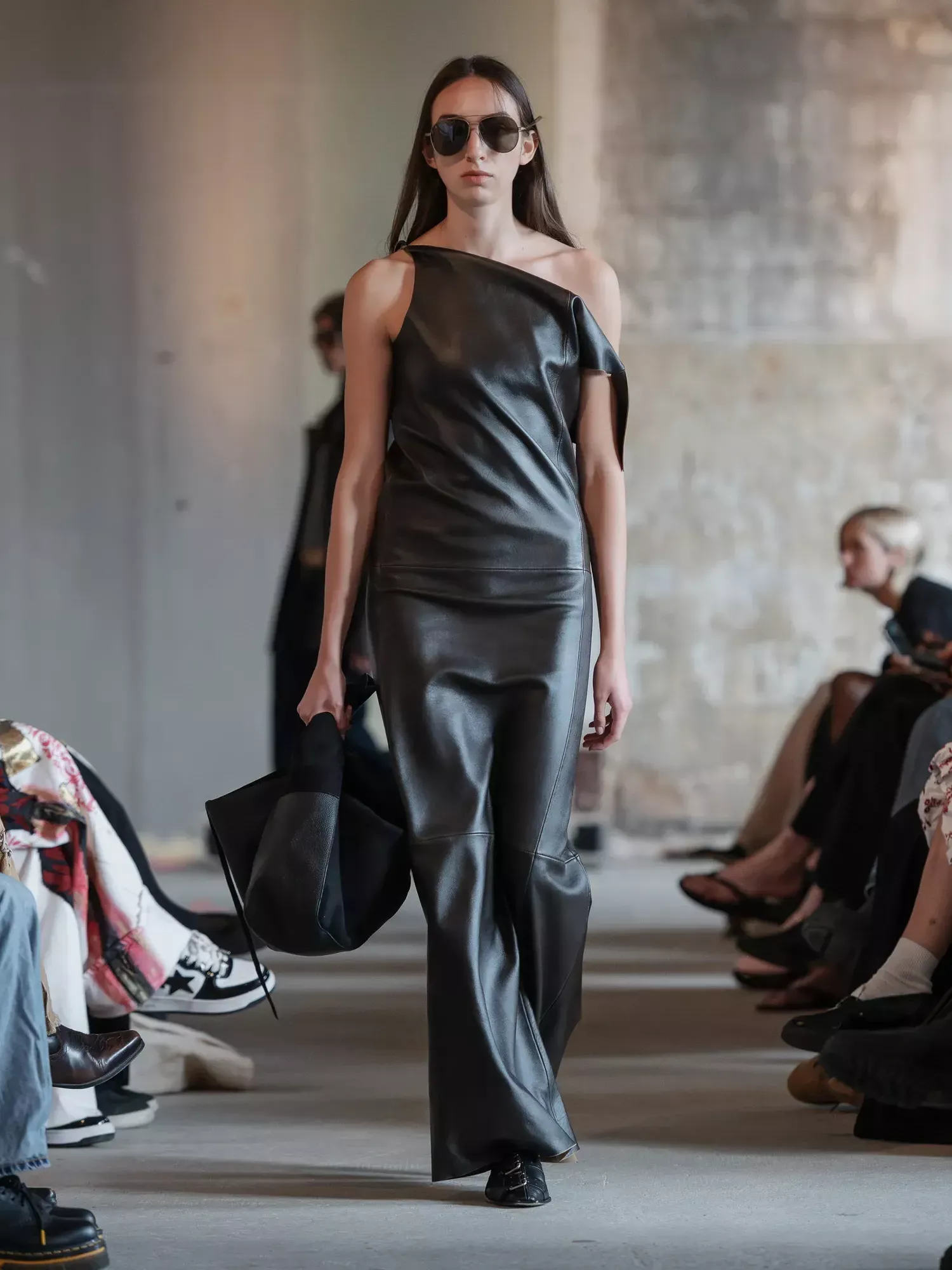
Photo: Mathias Nordgren / Courtesy of Studio Bon and STHLMFW
Studio Constance: The cool girl’s and cool guy’s new favourite brand
“We’re not really looking to be a minimal Scandi brand, we’re looking to be high quality, high fashion,” asserted Rebecca Dovenryd Almberg backstage after a knock-out debut show that was at once substantial (see the luxe fluffy shearlings) and subtly sexy. Using mesh from Swedish Stockings, Almberg crafted a pair of airy pants with a turn-down waist and a matching top that revealed a sliver of the belly. There was a sense of clothes being peeled off in the way she cut deadstock leather to reveal the suede side, and in outfits that had just one shoulder, by design or by the slip of the strap. Almberg, who worked for Toteme and Proenza Schouler in the past, used yarn left over from her graduation collection at the Academy of Art University in San Francisco to weave panels for cut-and-sew tops with a bit of Flashdance flair. Circularity is Almberg’s goal and this is one way she achieved it; another was taking her grandmother’s middle name for a brand dedicated to constancy.
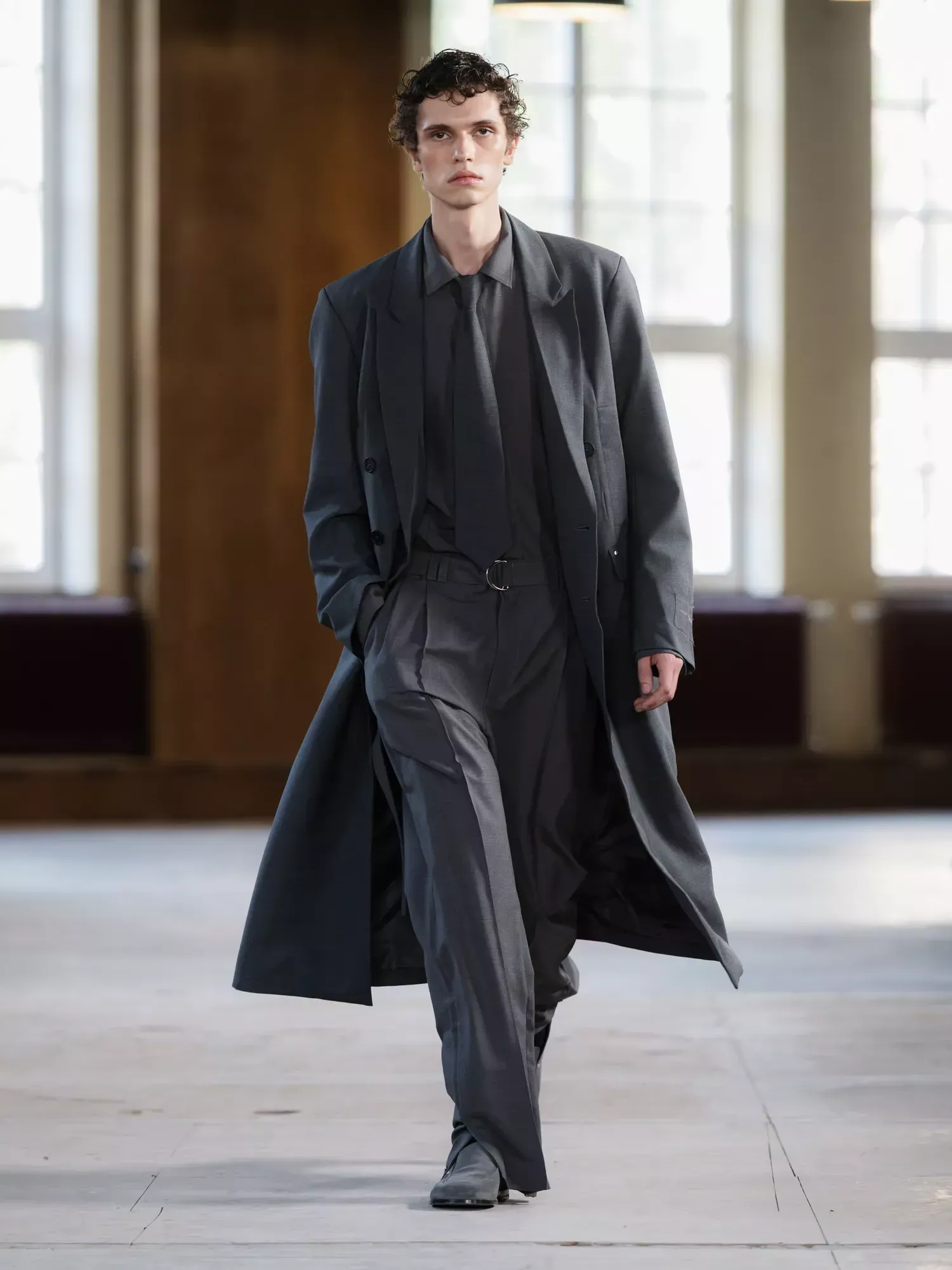
Photo: Mathias Nordgren / Courtesy of Studio Bon and STHLMFW
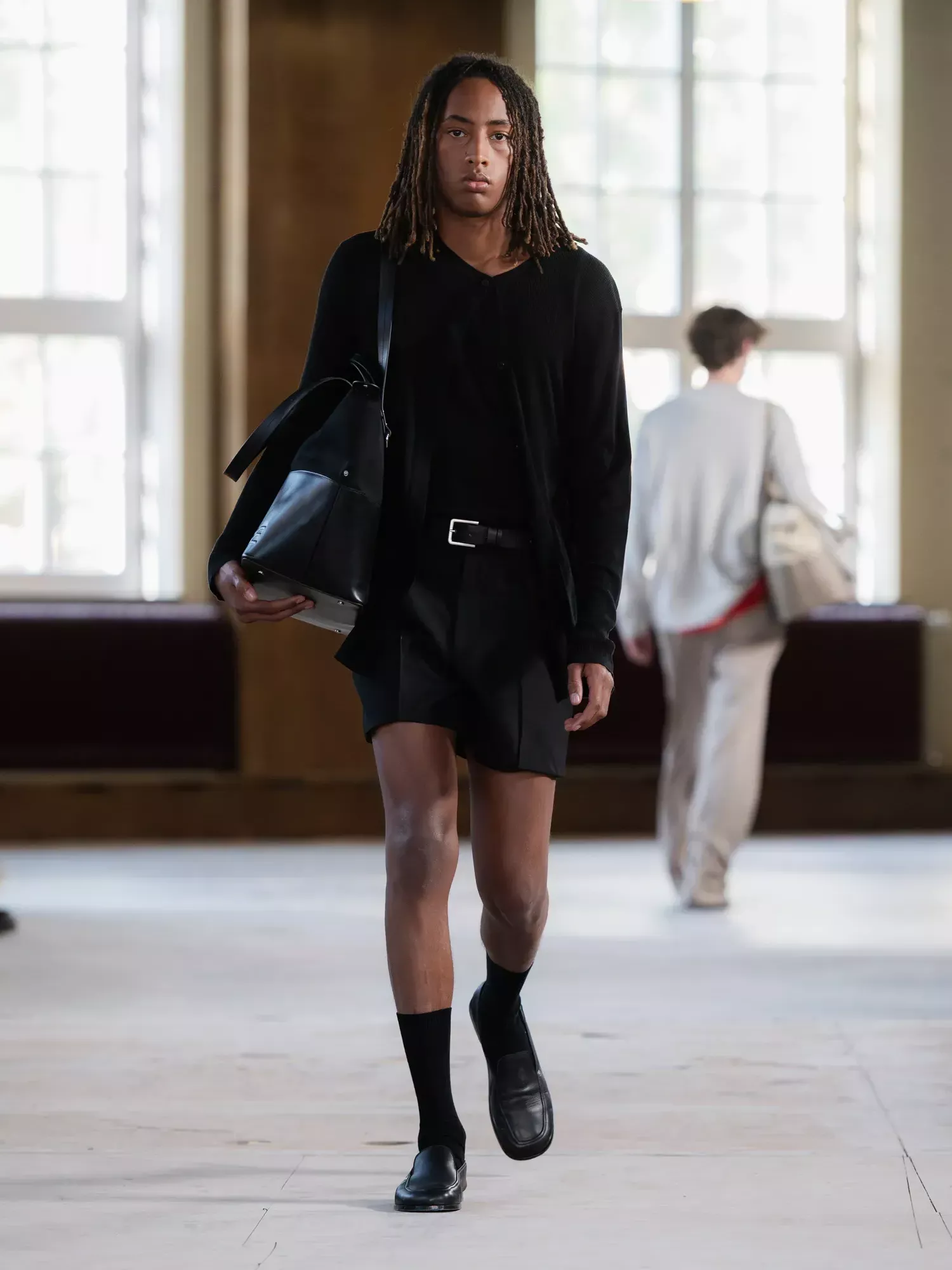
Photo: Mathias Nordgren / Courtesy of Studio Bon and STHLMFW
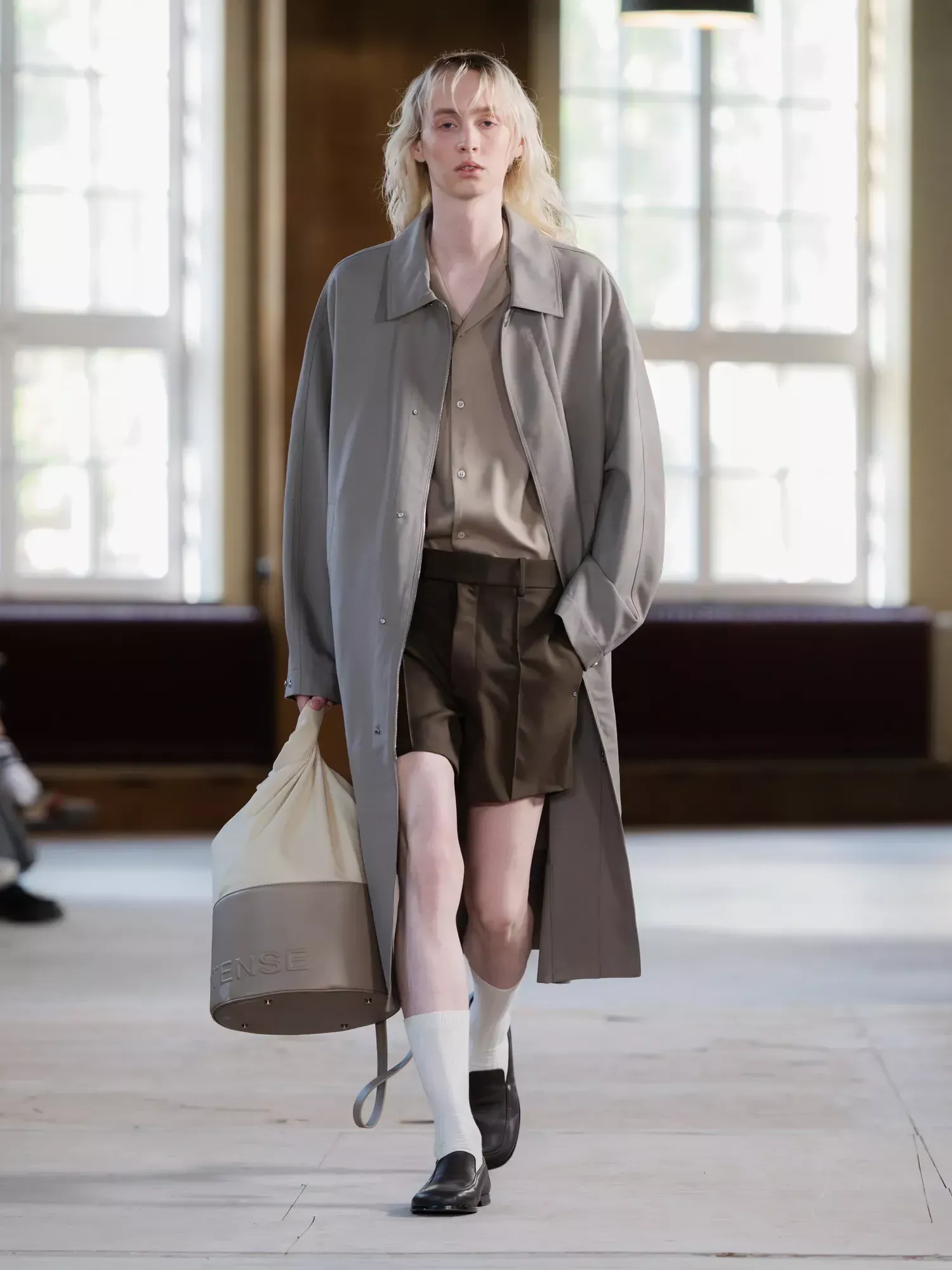
Photo: Mathias Nordgren / Courtesy of Studio Bon and STHLMFW
Past Tense: 50 shades of grey – for men
“Being a Swedish brand, Stockholm Fashion Week felt like something we just had to be a part of,” wrote Victor Lindh in an email exchange. “We also like to support new initiatives to give back for all the initial support we received as a young brand.” The sophistication of this collection belied the label’s newness: It was founded just two years ago by Lindh, who worked with Neil Barrett for many years, and Adrien Forray, who is the business mastermind. The spring lineup, called 'At Least the Sun Still Shines', was a kind of ambivalent love letter to Sweden’s capital city, which is never more enticing than at this time of year. Traditional suiting morphed into shorts dressing and easy looks; and sandals delivered a vacation vibe, even when worn with tailored looks.

Photo: Mathias Nordgren / Courtesy of Studio Bon and STHLMFW
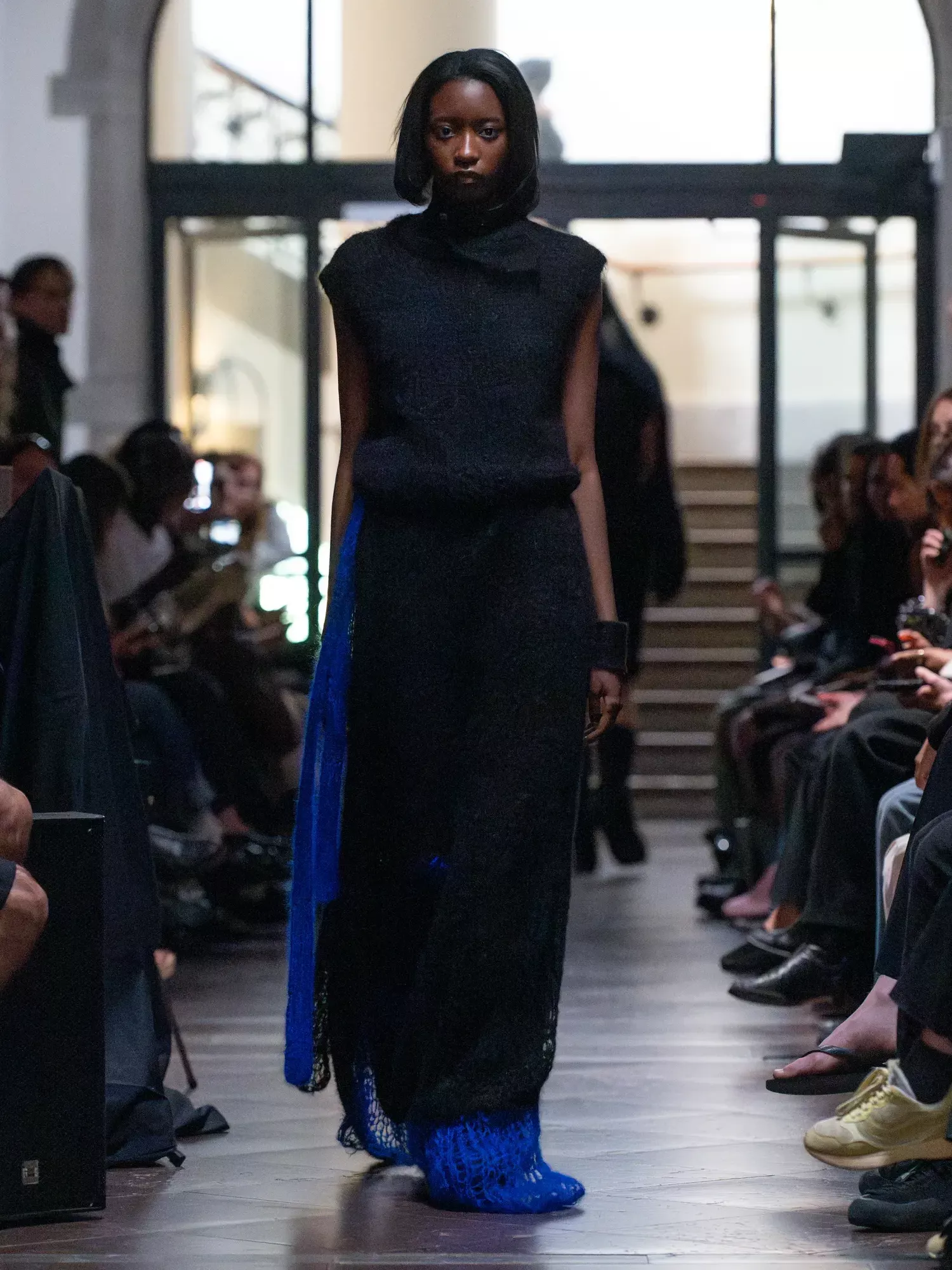
Photo: Mathias Nordgren / Courtesy of Studio Bon and STHLMFW
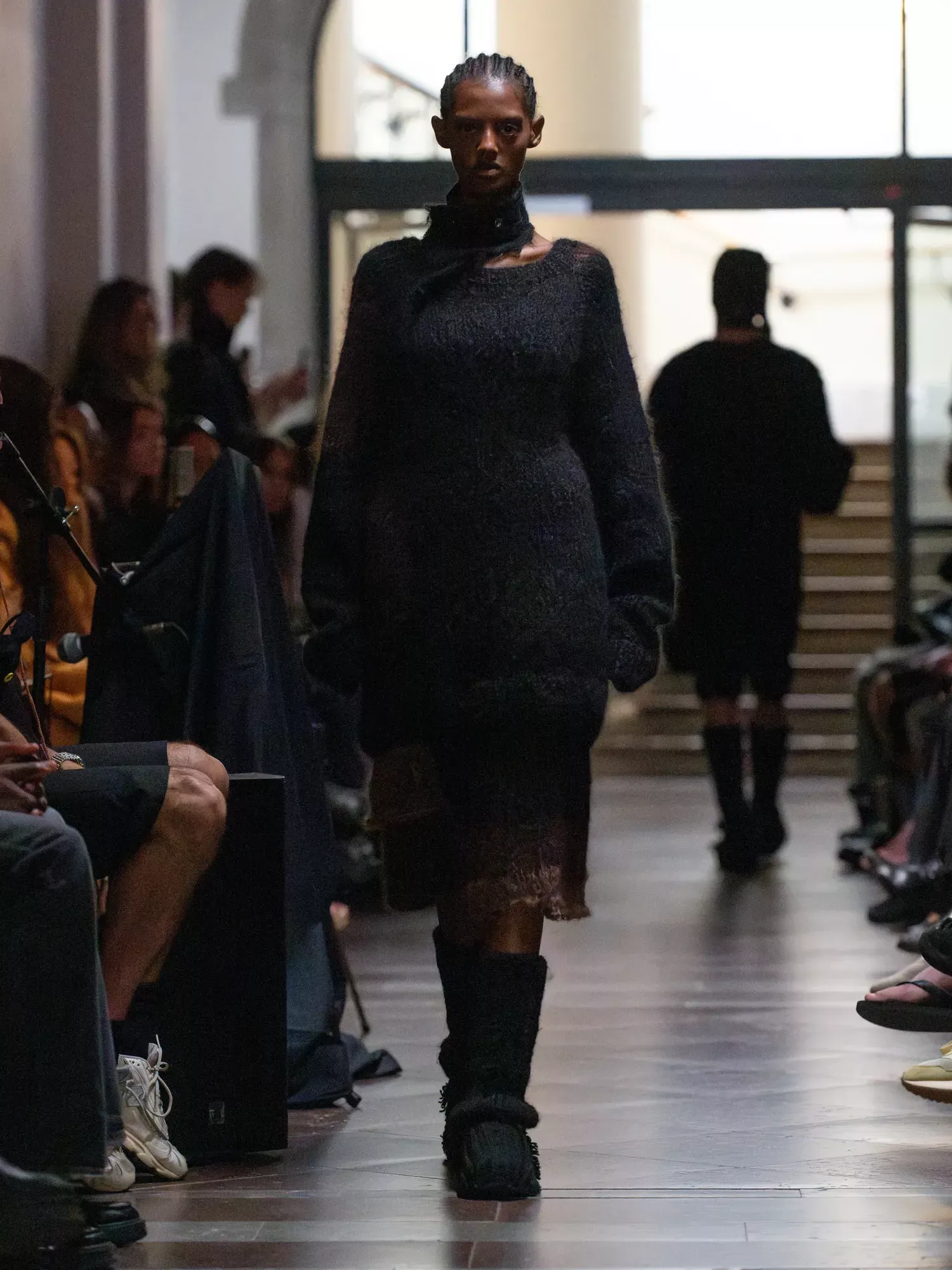
Photo: Mathias Nordgren / Courtesy of Studio Bon and STHLMFW
Imaskopi: Forest creatures and cat charms cuter than Labubus
Nelly Skog and her mother handknit every slouchy mohair piece that walked down the runway at Imaskopi’s show, which was held at the Nordiska, a museum dedicated to 500 years of Nordic culture. There was nothing random about this location: “I wanted to reconnect to this history of handcraft and connect to that heritage,” the designer said post-show. Live musicians performed some of the Scandic folk music Skog had been listening to as she designed a collection that added some ’80s inflexions to a “forest creature” aesthetic. John Bauer’s curious trolls came to mind as models with eared hats and knit-covered clogs appeared on the catwalk. Yet fashion isn’t all fun and games to Skog, who combined fashion with gender studies at Stockholm University. “I’m very, very passionate about genderless clothing because I don’t really understand how or why we gender clothes. Everything happens when you put them on. [Clothing can be] so many different things on different bodies in different combinations; I think that is what is exciting about fashion.”
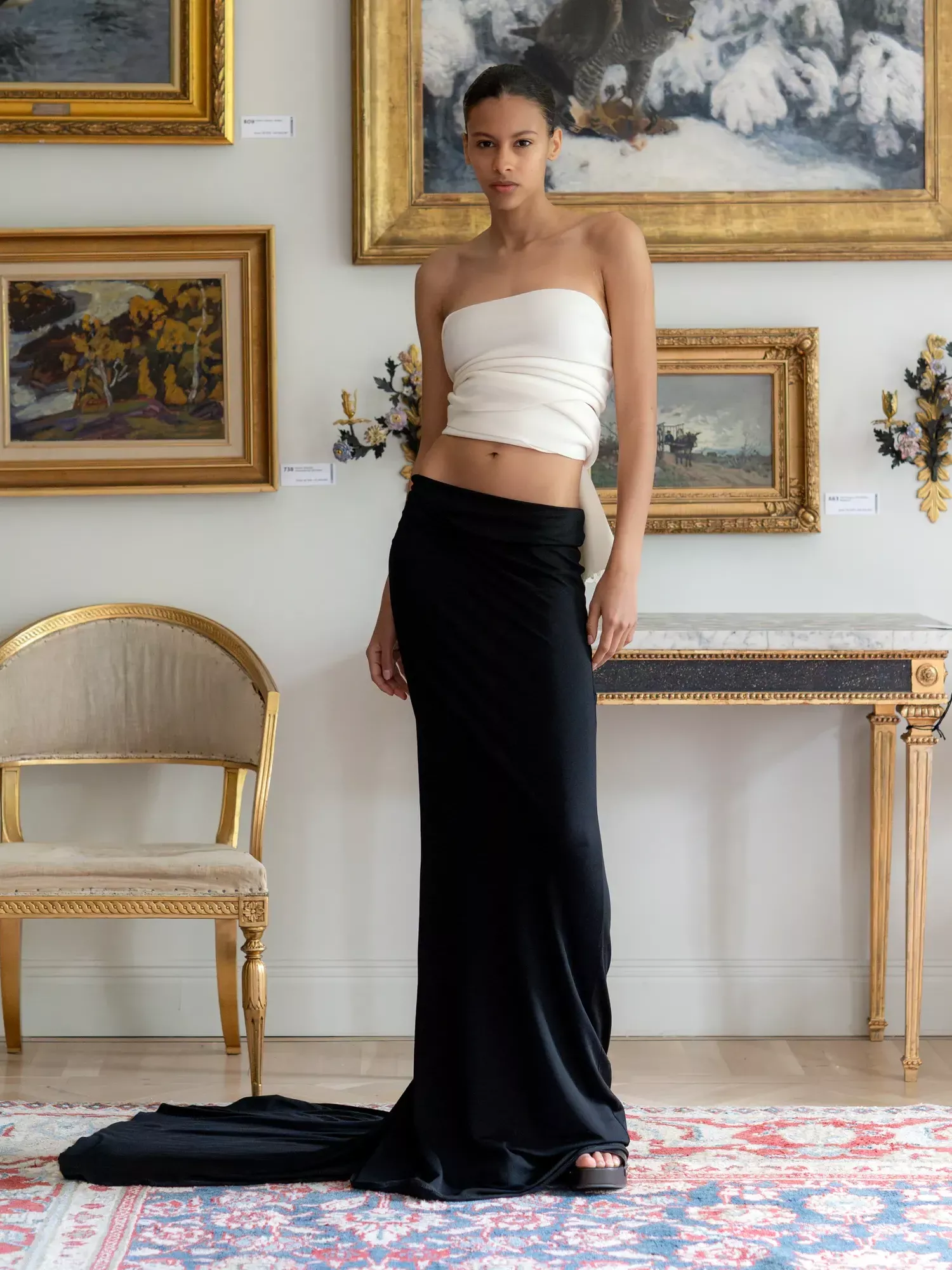
Photo: Mathias Nordgren / Courtesy of Studio Bon and STHLMFW
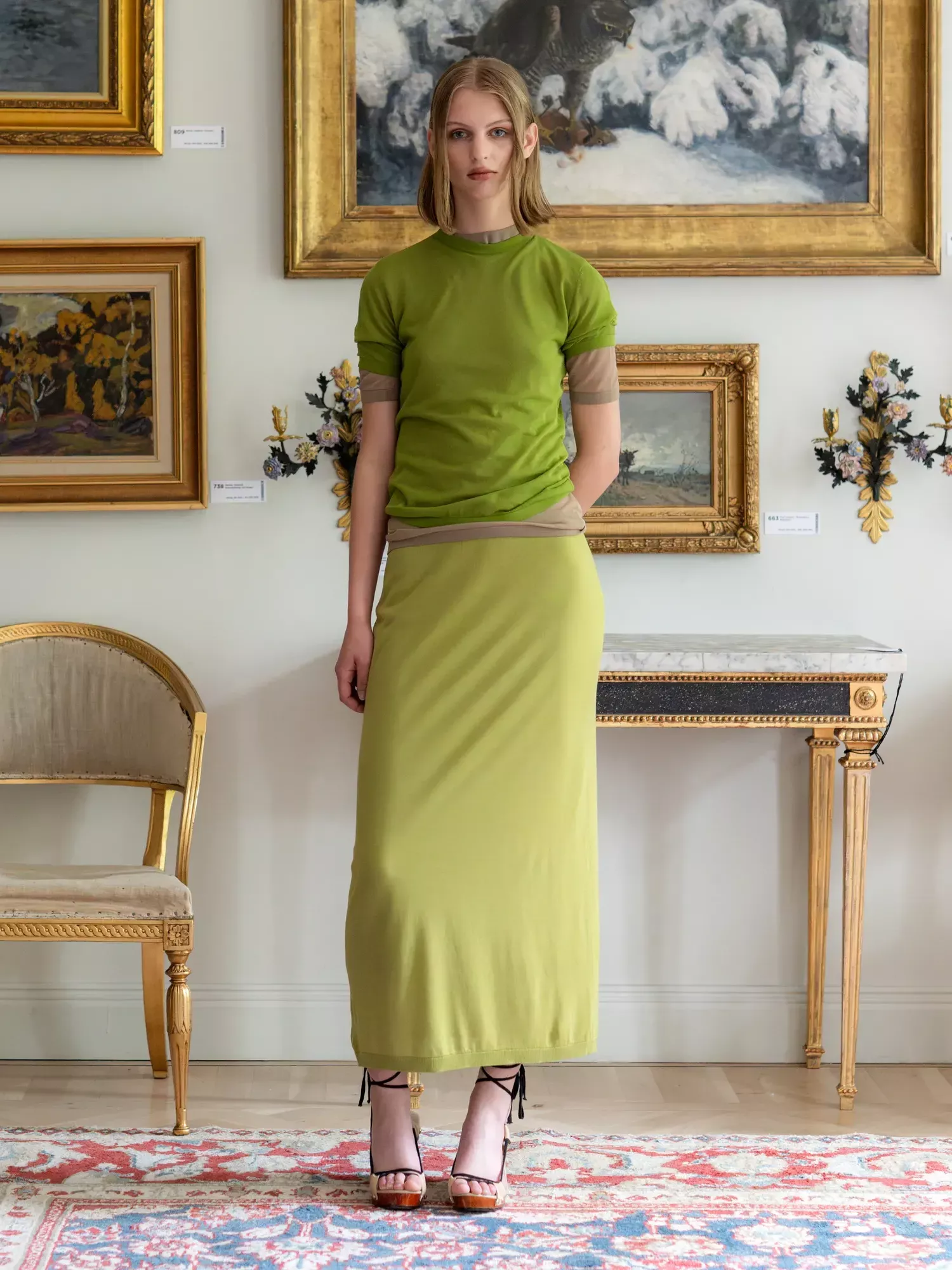
Photo: Mathias Nordgren / Courtesy of Studio Bon and STHLMFW
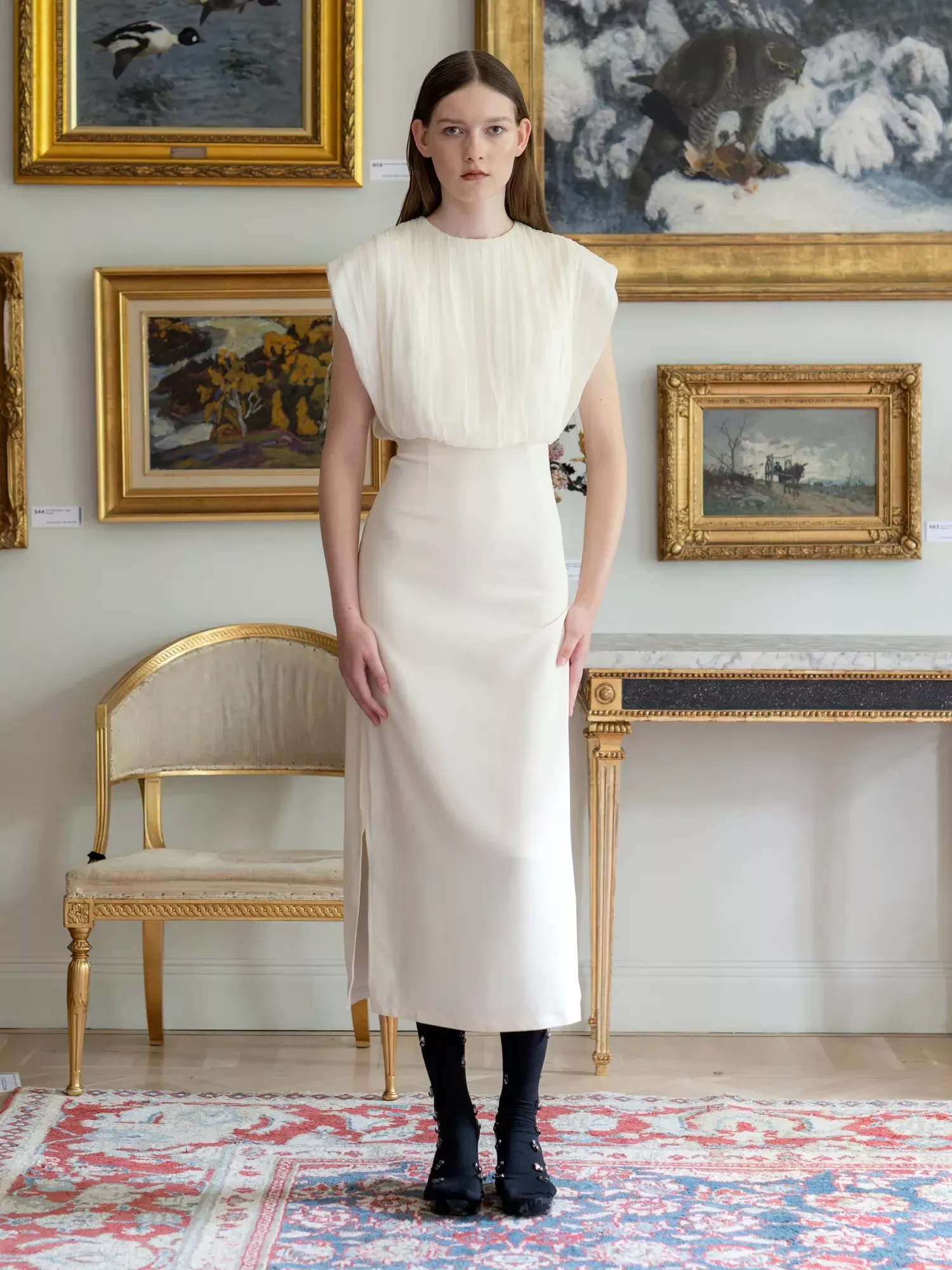
Photo: Mathias Nordgren / Courtesy of Studio Bon and STHLMFW
Leoní: Dressed-up minimalism
Two years ago Nathalie Schuterman, one of Stockholm’s most successful fashion retailers, teamed up with Beckman’s-trained designer Filippa Fuxe to launch Leoní, a sophisticated, dressy ready-to-wear brand that also produces one-of-a-kind looks in its atelier. The duo presented their spring 2026 collection at Bukowski’s auction house, where artwork and objects from the upcoming Important Spring Sale were on view. It was a complementary pairing as Leoni puts an upscale, polished spin on minimalism. Fuxe spoke beautifully about being inspired by a visit to Kyoto which got her thinking about dressing as “a form of ceremony.” To that end, she explained that many of the looks can be customized. That was most obviously the case with a black bias-cut skirt which was shown with a length of ivory cloth that was seemingly casually wrapped around the chest and tied at the back.
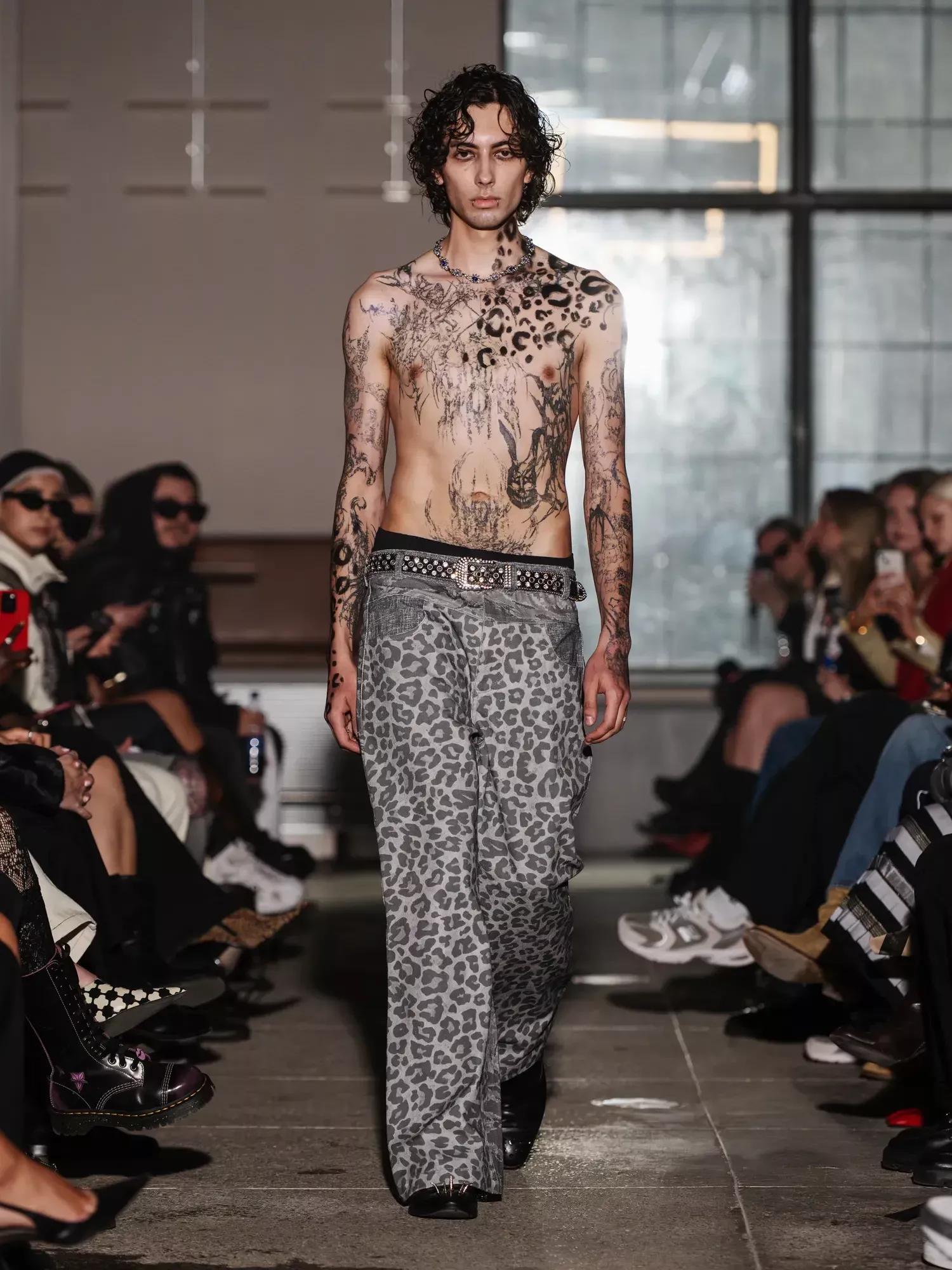
Photo: Mathias Nordgren / Courtesy of Studio Bon and STHLMFW

Photo: Mathias Nordgren / Courtesy of Studio Bon and STHLMFW
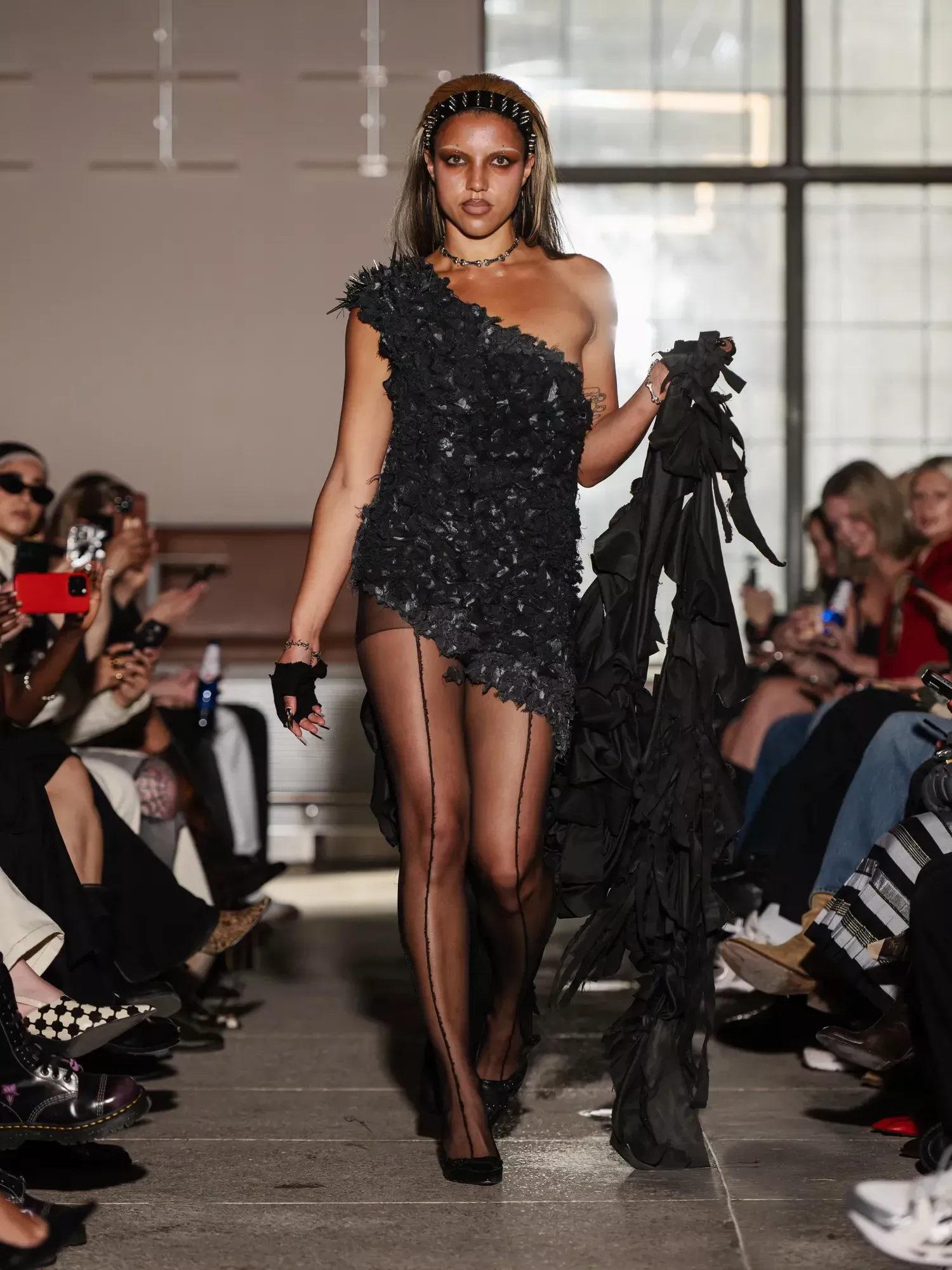
Photo: Mathias Nordgren / Courtesy of Studio Bon and STHLMFW
Seams: Where streetwear meets punk
One of the youngest participants in Stockholm Fashion Week was 21-year-old Dustin Glickman who was born in California, and lived in St. Louis before moving to Stockholm at age seven. At 16, he started a T-shirt and hoodie brand called Abundant. His luck seems to be just that; in 2023, Nima Lack, who five years earlier had started Seams, a silver jewellery business, tapped Glickman to launch apparel. The result, as the designer said, is “streetwear mixed with punkier elements.” For this season’s Seams show, Glickman explained that he “cast people that do something creatively and that I’ve met before.” He applied the same principle when pulling together hair and makeup teams. While it’s early days for Glickman and Seams, there’s a sense he’s speaking directly to a community of cohorts. “I want us to be seen as a Swedish brand, and we are trying to show that [this exists] in Sweden and in Stockholm, instead of just the minimalistic stuff all the time,” he said.
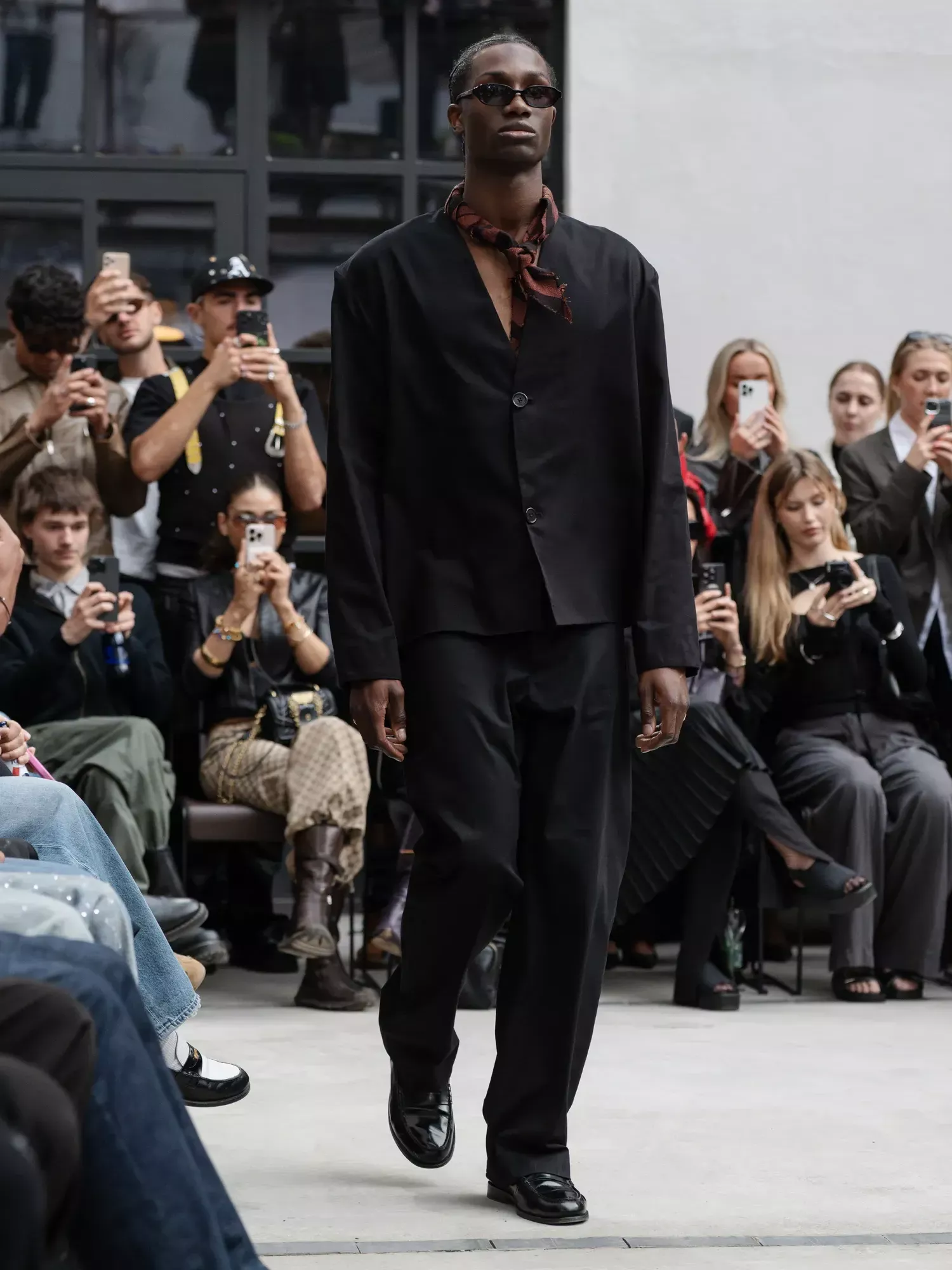
Photo: Mathias Nordgren / Courtesy of Studio Bon and STHLMFW
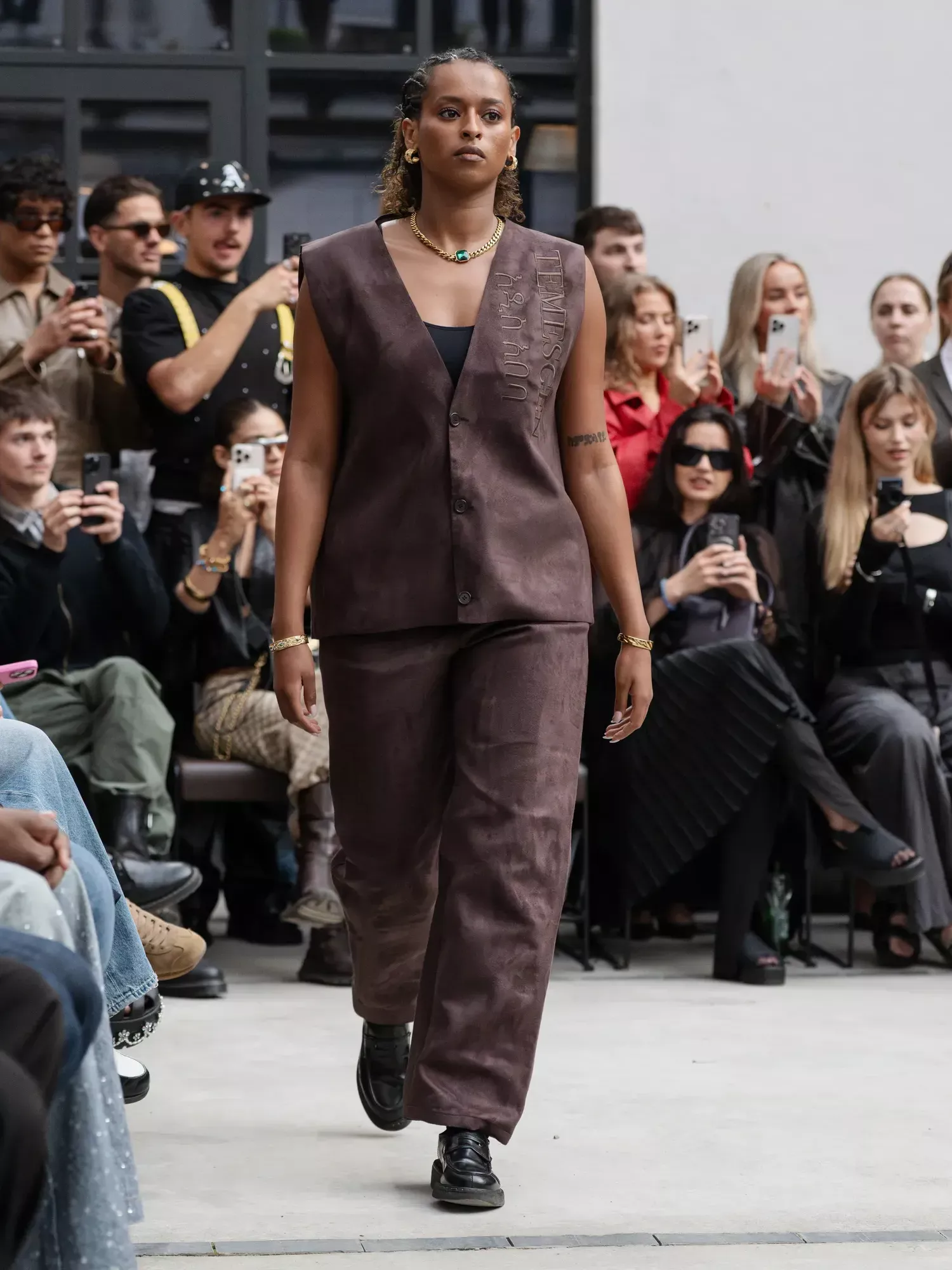
Photo: Mathias Nordgren / Courtesy of Studio Bon and STHLMFW
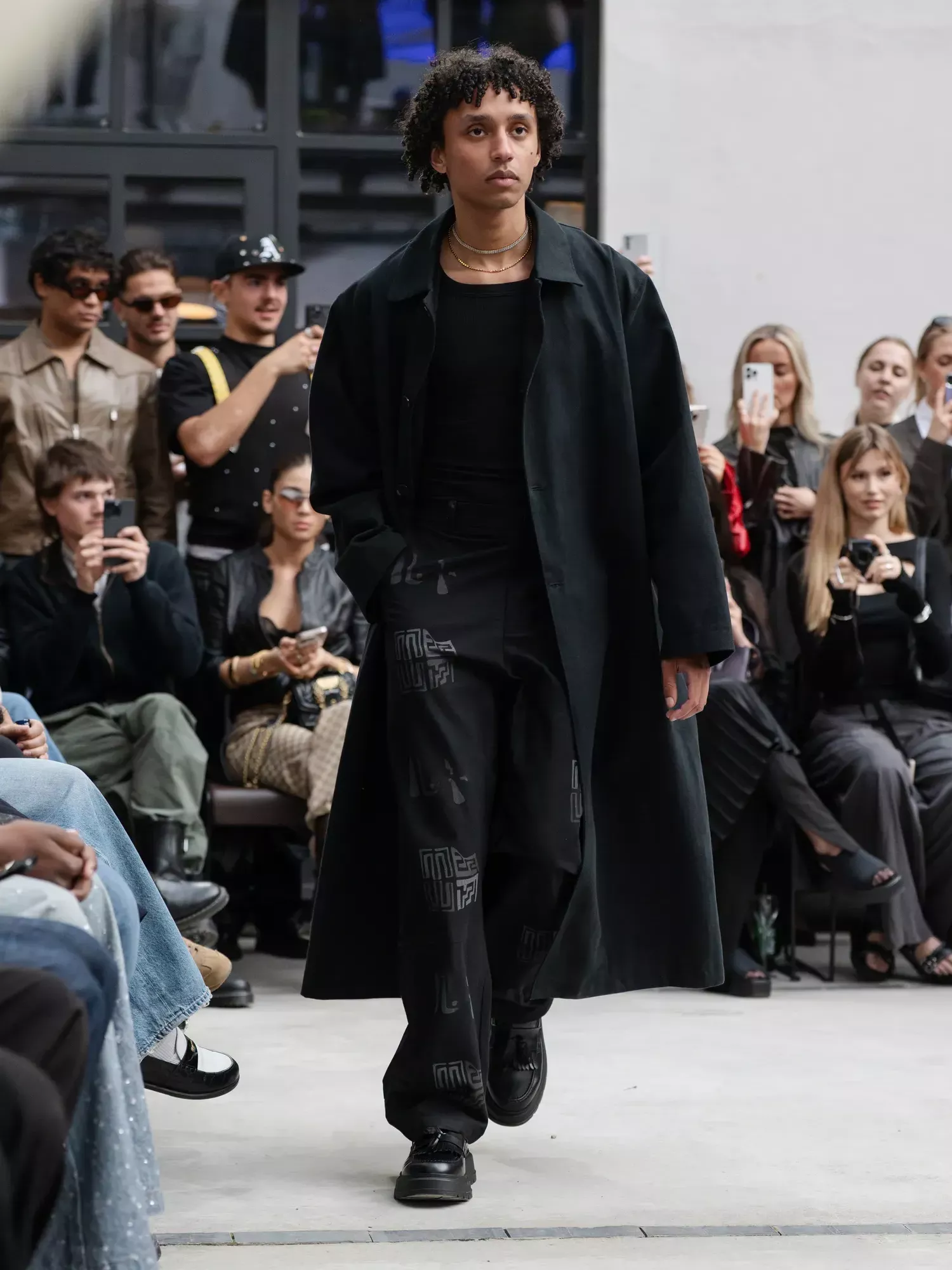
Photo: Mathias Nordgren / Courtesy of Studio Bon and STHLMFW
Temesgen: “One story, two cultures”
One of the brands representing the African diaspora at STHLMFW was Temesgen. There was a palpable sense of goodwill from the over-capacity crowd that gathered for the brand’s debut show, which closed out the week. The label was founded by Jimmie Temesgen Sandberg, who previously worked at Die Monde, a company founded by Togolese-Swedish designer Angelo da Silveira (who was on the Fashion Week schedule himself with a collaboration with Humana secondhand). In a pre-show exchange, Sandberg said he was after “an inspired fusion of Sweden and Ethiopia.” The show notes expanded on that idea: “This collection celebrates the idea that it’s not only possible but powerful to carry both sides equally. Equal and Home are not opposites; they coexist. Just like we do.” Living in harmony with nature is part of the deal at Temesgen as well; the unisex lineup was made using deadstock and recycled fabrics, and many pieces, including a smart khaki overcoat, featured Ethiopic script.
Originally published on Vogue.com
